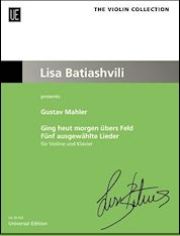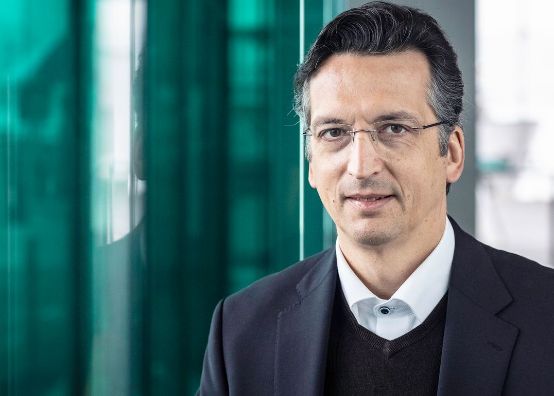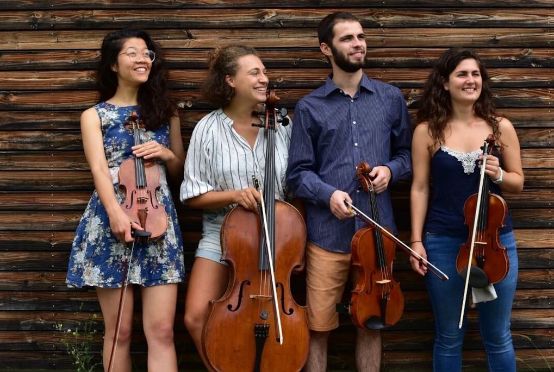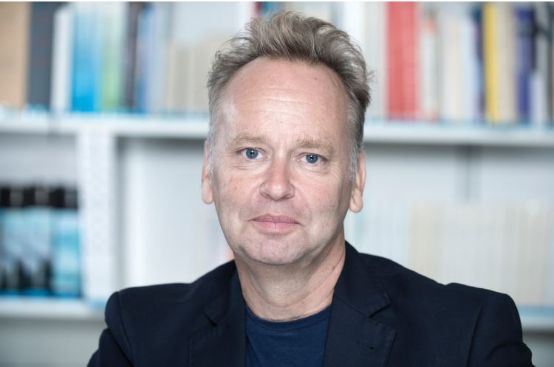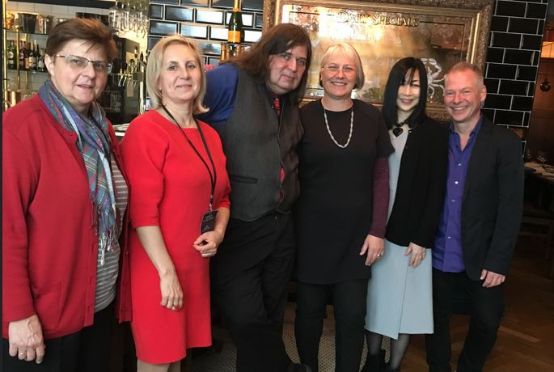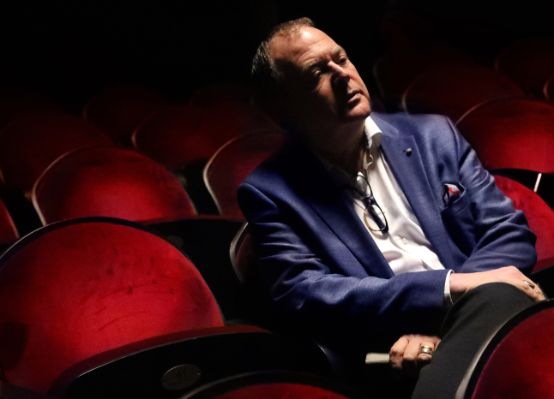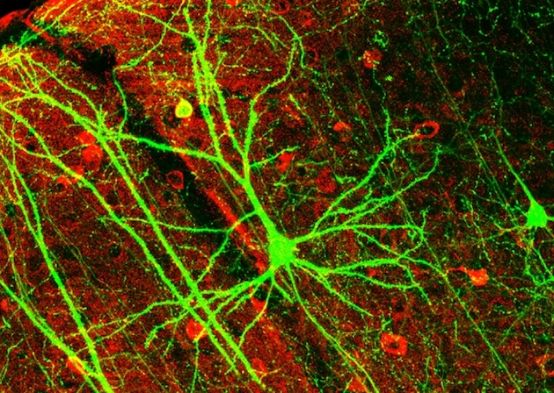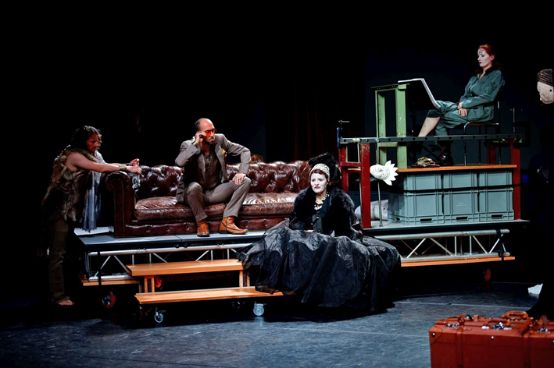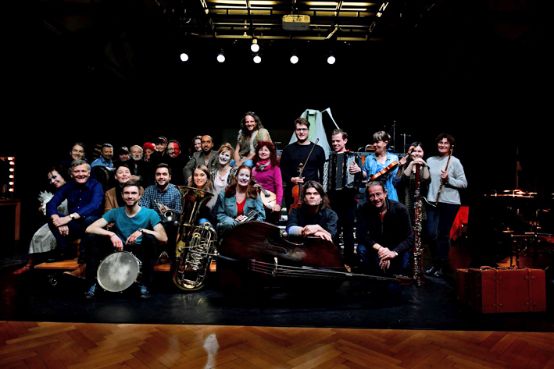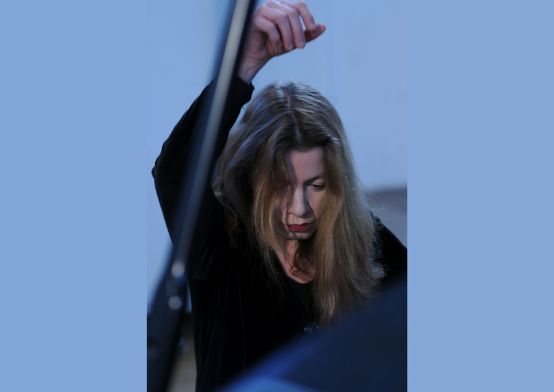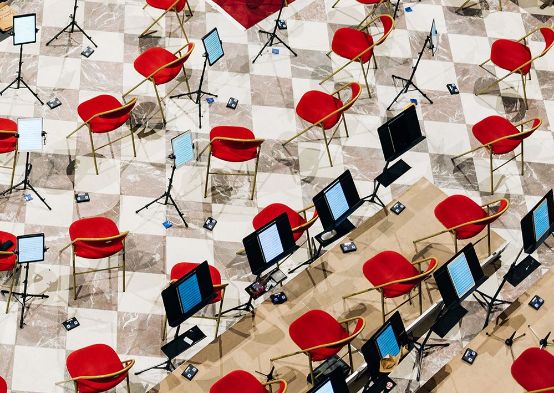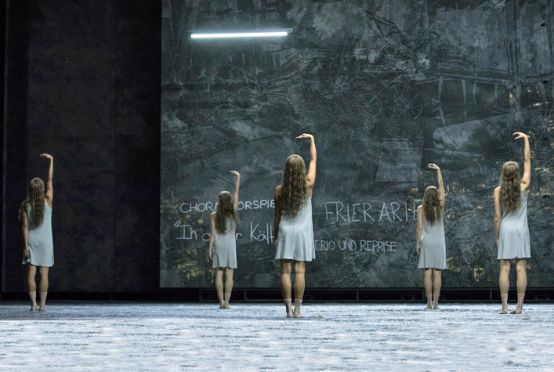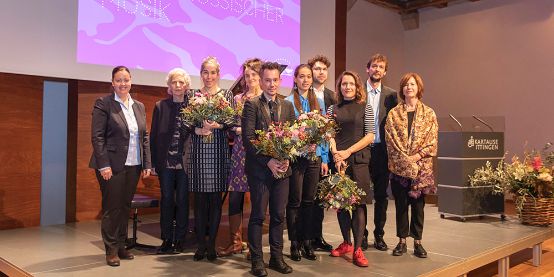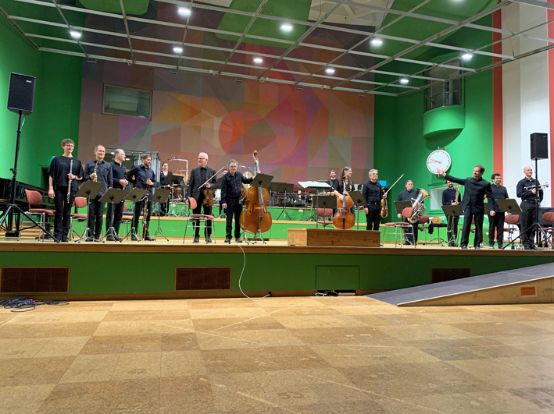
This is how time travel works: On Friday, I'm still deep in the East of Germany, in the old royal seat of Dresden with the affable and tradition-conscious Saxons, who refuse to adapt to "Wessi-speak" at all costs, and who put away the verdict of the distant Western media that they are susceptible to fascism with a friendly smile. Then, on Saturday, the flight with Swiss from the former valley of the clueless (no Western television) directly to today's island of the blissful (unprecedented prosperity). But here I am immediately beamed back thirty years to that very valley and the neighboring areas, which were not yet flourishing landscapes back then. Someone can still find their way around.
The destination of the journey through time was the Zurich radio studio with the six-hour series of events organized by the Collegium Novum Zurich (CNZ) "... and turned towards the future ..." (a line from the GDR national anthem). The theme was what was called "GDR music" or "GDR culture" in general until 1989 and is now only the subject of memories - associated with relief or nostalgic feelings, depending on your point of view. Both resonated in the extensive program with two concert blocks, two films and a panel discussion. The evening bore the signature of Jens Schubbe, who was born in the GDR and is now handing over the management of the CNZ to Johannes Knapp after nine years and returning to Germany to work as a dramaturge at the Dresden Philharmonic Orchestra. The concert has since been repeated in Dresden with the Zurich line-up - on the symbolically charged date of November 9th.
When an entire culture goes under the wheels
With this project, he wants to create an awareness of historicity, says Schubbe. His idea: a cultural landscape that has grown over decades should not simply disappear into the orcus of history, despite its glaring problems and contradictions. In fact, contemporary music in the GDR was wound up in a similar way to the economy after the fall of communism in 1989; the financially strong West German cultural sector integrated some of it, but pushed most of it aside and thus consigned it to oblivion.
Much of what was produced under German socialism rightly perished. Many GDR citizens were fed up with state art with populist maxims and stupid, albeit progressively disguised, educational slogans as once practiced by Hitler and Stalin. The more awake among the composers felt that they were constantly being bullied anyway. In principle, this did not change even when a party official authority like Paul Dessau used his prestige to defend the dissatisfied young generation against stubborn cultural functionaries from time to time.
When, in the 1970s, the Socialist Unity Party (SED) relaxed the guidelines for artists somewhat, the result was what attracted attention in the West as the "GDR avant-garde": works in which the limited freedom to develop individual creativity was used and even expanded. They manifest the dialectic of forced conformity and coded resistance that was characteristic of art in a dictatorship. Among the protagonists of this development were the rebellious composers Friedrich Goldmann and Friedrich Schenker, who were associated with the Leipzig ensemble "Neue Musik Hanns Eisler", the Berlin composers Georg Katzer, Paul-Heinz Dittrich and Reiner Bredemeyer and, with a more conservative touch, Udo Zimmermann in Dresden.
Resistance and swan song
The Collegium Novum under Jonathan Stockhammer has now performed three important works that are representative of the work of this generation. The Chamber Music II by Paul-Heinz Dittrich from 1973, an energetic, contentious dialog between tape and a small ensemble, contains everything that was still considered Western decadence in the GDR at the time, with denatured sounds, microtones and an unconditionally subjective tone. La fabbrica abbandonata III by Georg Katzer from 2010 is a postmodern response to Luigi Nono's revolutionary composition La fabbrica illuminata and at the same time a highly symbolic swan song to a bankrupt social system. The play is based on a text by Wolfgang Hilbig from the 1970s, which packs the industrial decay in the GDR into a ghostly vision of doom. The long first part is a descriptive monodrama (narrator: Peter Schweiger), the end with its exposed soprano part is a piece of surreal poetry (with acrobatic precision: Catriona Bühler).
The third work was the Sonata a quattrocomposed in 1989 by Friedrich Goldmann. The piece for four times four instruments exposes the instrumental families of woodwinds, brass, strings and percussion in their specific sonorities and gradually mixes them into ever new constellations. The latent formalism of this arrangement is counteracted by a multitude of colors and an orgiastic moment of tutti. With its expansive gesture, the work clearly and audibly bids farewell to the narrowness of the past.
Deserted in Boswil
Wilfried Jentzsch was one person for whom the little freedom he had in the GDR was not enough. In 1973, he took advantage of a stay at the Künstlerhaus Boswil, at the time one of the few venues for GDR avant-gardists in the West that was accepted by the SED cultural superiors, to say goodbye to the workers' and farmers' paradise. He was now a guest in Zurich and, in conversation with Jens Schubbe and Johannes Knapp, vividly described the situation at the time and the reasons for his escape.
Jentzsch renounced the cooperation with so-called cultural brigades from the factories to secure his livelihood - the party had made this a cultural policy guideline under the name "Bitterfeld Way" - and preferred to make a living on the free market in the West. In Paris, he came into contact with Xenakis and began composing electronic music. Then, after reunification, he returned home to a foreign country that had somehow remained the same: the Dresden University of Music appointed him head of the Electronic Studio. In Zurich, Jentzsch wrote the composition Tamblingan for electronic sounds and video projection, in which digital sound signals and abstract pixel images correlate.
Surreal images from a joyless society
Two films by GDR filmmaker Frank Schleinstein, who died in 2017, rounded off the program. Earth game (1990) is an oppressive look back at a joyless society. Post-war misery, dilapidated industrial landscapes, a sterile public sphere and the ego's search for a social place worth living in are condensed into surreal sequences of images. A portrait film about Friedrich Goldmann provides a good insight into the cultural scene of the time, despite some shortcomings - tape interviews were often simply underlaid with images. Celebrities also have their say. Director Ruth Berghaus says, for example, that Goldmann was often frequented by musicians who "did not feel comfortable" in their country. She mentions Henze and Nono but, like a nomenclature artist, omits the composers in her own country. "We up there, you down there": This was not unknown under socialism.







